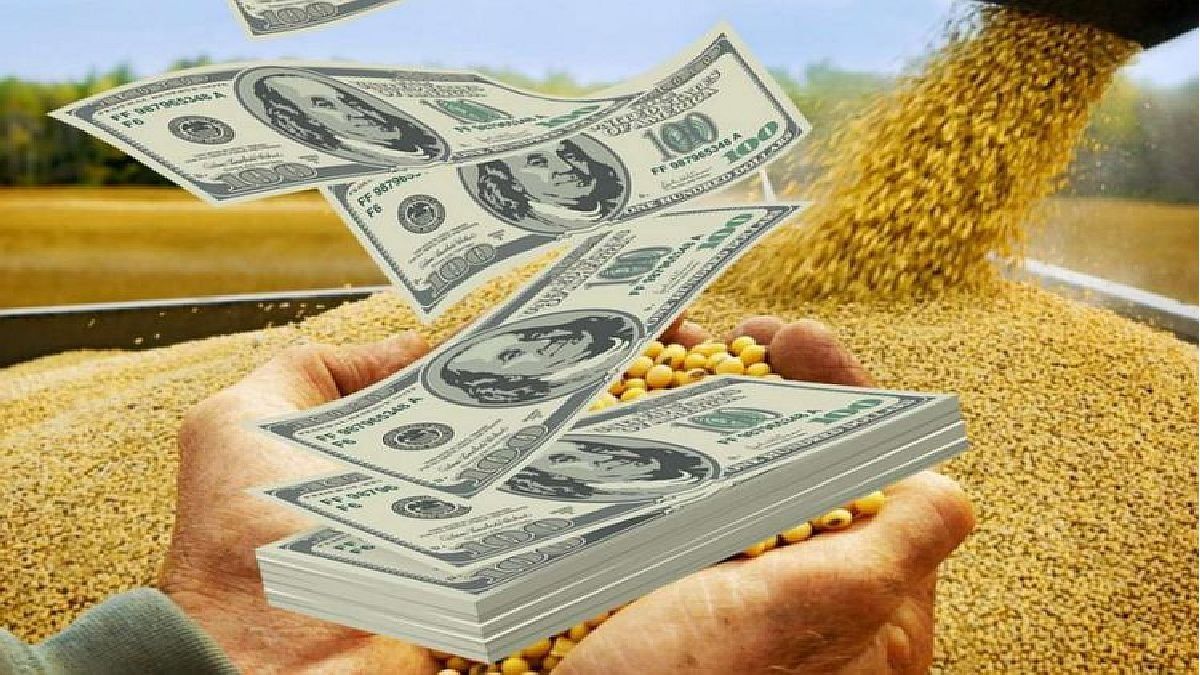This afternoon the Government confirmed the implementation of a new differentiated exchange rate for the countryside, within the framework of the implementation of a plan of exchange rate stabilization. The measure comes after arduous negotiations between the Economy and the sector regarding what mechanism would be implemented to generate an improvement in competitiveness when exporting. This was confirmed by official sources Ambit in a context in which it is sought to promote the liquidation of dollars in the coming months due to the lack of supply of commercial currencies.
The new program consists of an expanded version of the soybean dollar, in line with what the exporters requested, who were asking for a “agro dollar”. It will begin to be applied from April to exporters of other products: in addition to soybeans, wine, apples, rice and peanuts will be added, among others.
The Government expects to reach a settlement of US$15,000 million between the second and third quarters of the year. The value of the agro dollarbut it is expected to be around $300 (although taking into account that previous versions of the soybean dollar exceeded the official exchange rate by 30%, it should be between $270 and $280).
For the countryside, this is good news, since, according to the economist and financial adviser Salvador Vitelli, “if one looks at the values of soybeans, with the official exchange rate, the producer ends up receiving 33% of what he should collect because you lose 33% for the difference in price and another 33% for taxes”. Thus, he considers that trying to honest the exchange rate is the most appropriate because it would not affect the collection.
That is why, as was said, this will be within the framework of an exchange rate stabilization program, in which seek to simplify the various exchange rates so as not to have so many varieties of dollar, such as “card”, “savings”, “Qatar” or “Coldplay”. This would be in line with another of the strong claims of the countryside, according to the economist Juan Pablo Albornoz, from Invecq, to tend towards exchange rate unification.
And this is linked to the fact that, on the one hand, “the producer accesses an official exchange rate that is highly appreciated in historical terms and, on the other, if he wants to dollarize his produce, the gap eats away a good part of the return in dollars and has an impact on inputs, expenses, etc.,” according to Vitelli.
Agro dollar: this is what is known so far
The details of the new agro dollar They will finish agreeing this weekend, according to official sources. But, from what is known so far, the program contemplates the implementation of a differentiated dollar for soybeans (what would be the soybean dollar 3)which will be implemented for a period of 30 days (April), while, for regional economies, the expected application period is 90 days (during May, June and July), with the possibility of extending it for another three months.
The two central objectives of the measure are, on the one hand, to make more competitive to chains in the international market and the other, to support with financing the expansion of planted areas, which will be implemented through the Export Increase Fund.
Likewise, one of the elements that will be agreed upon in the coming days is how to cushion the collateral impacts of the new agricultural dollar. And it is that, as Albornoz points out, “this new, more comprehensive exchange rate has a problem: the impact can be foreseen at the macro level, but not at the micro level. This means that you have to agree with the different productive branches (sector by sector) prices for the domestic market so that the improvement in competitiveness achieved abroad does not harm local dynamics.
Agricultural dollar: will wheat and corn enter?
Of course, in the list of products reached by this new dollar Two great protagonists of Argentine agriculture are missing: corn and wheat. And, at this point, would lie one of the most controversial issues that were dealt with in the negotiation between the countryside and the Government. because the first one is key input for other sectors of the field and the second has a great impact on the evolution of the prices of the basic food basket, since many of its basic components, such as bread, are produced based on wheat.
These situations were the origin of tug-of-war between the Government and the producers, as reflected by Horacio Salaverri, president of the Confederation of Rural Associations of Buenos Aires and La Pampa (CARBAP), who maintains that “it was used at fieldactually to a part of it, which is soybean, to increase BCRA reserves, but many sectors, such as dairy and meat farming, were affected by its implementation because the cost of food supplementation increased a lot. animals”.
On the other hand, according to specialized sources, “chicken producers were pushing for corn not to be included in this initiative because the production would be very expensive and there are sectors within that group that complain that the disbursement of some subsidies by the Government has not yet been complied with”. Thus, they see it as one more obstacle that would add to production. And it is a key sector, since around 48 kilos of chicken are consumed per person per year in Argentina.
A positive message in a complex context
The details will become known from today afternoon and as the new program is regulated, but the Government understands that implementation must be urgentgiven that the reserves touched minimum levels so far this year.
In fact, the Central Bank (BCRA) has sold US$1.8 billion in the official exchange market this month, while the field liquidated just over US$1.1 billion in the same period. This Thursday, US$76 million more were sold and forward projections are negative given weather conditions. Therefore, within the framework of the negotiations that Sergio Massa is carrying out with the International Monetary Fund (IMF) for these hours, the determination was made to advance this announcement.
In addition, Minister Massa launched from the US capital the promise to add US$3,000 million from international organizations for the coffers of the Central, they said in Economy. Another important bet that it carries forward in its objective of increasing reserves.
Source: Ambito




